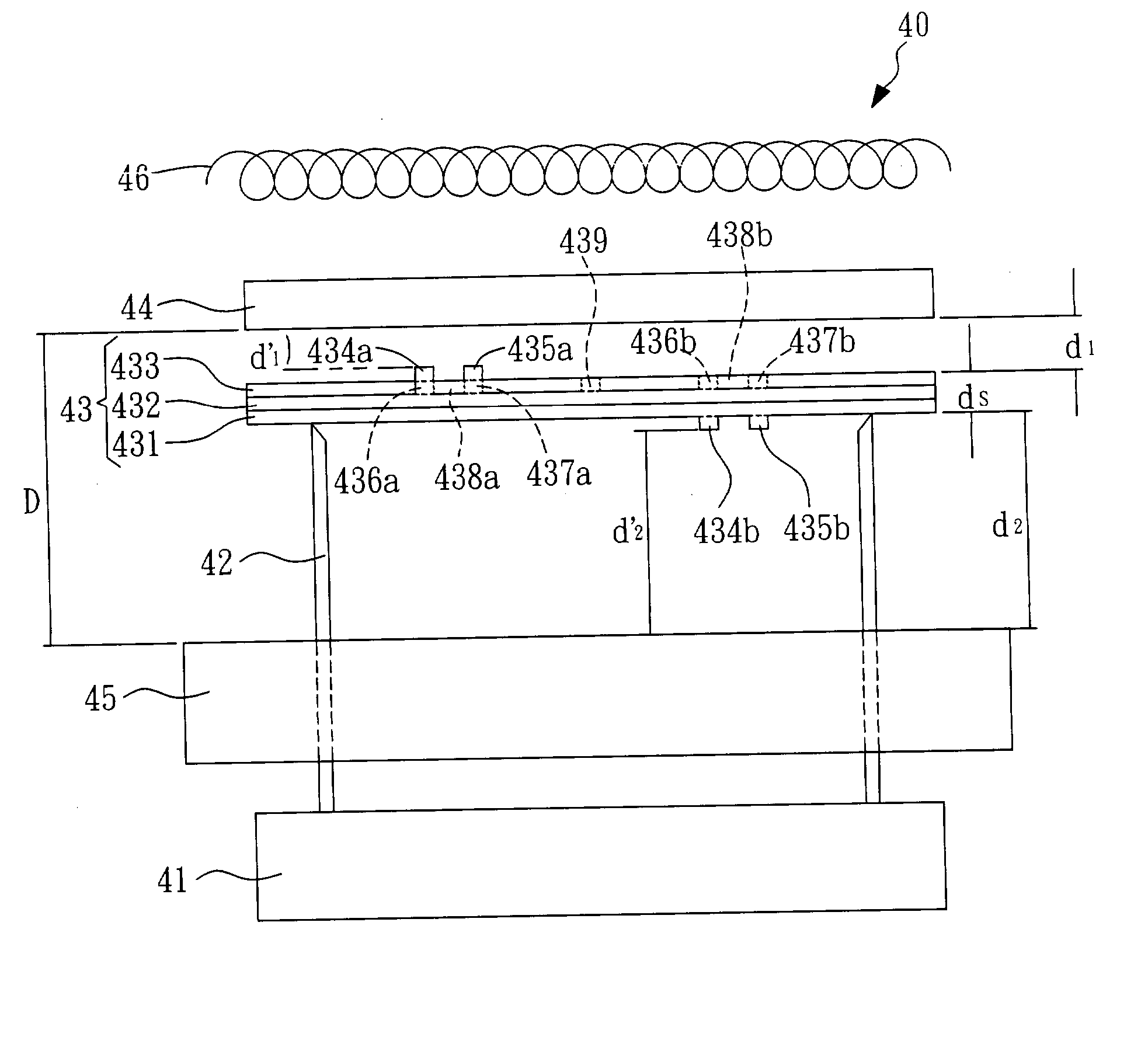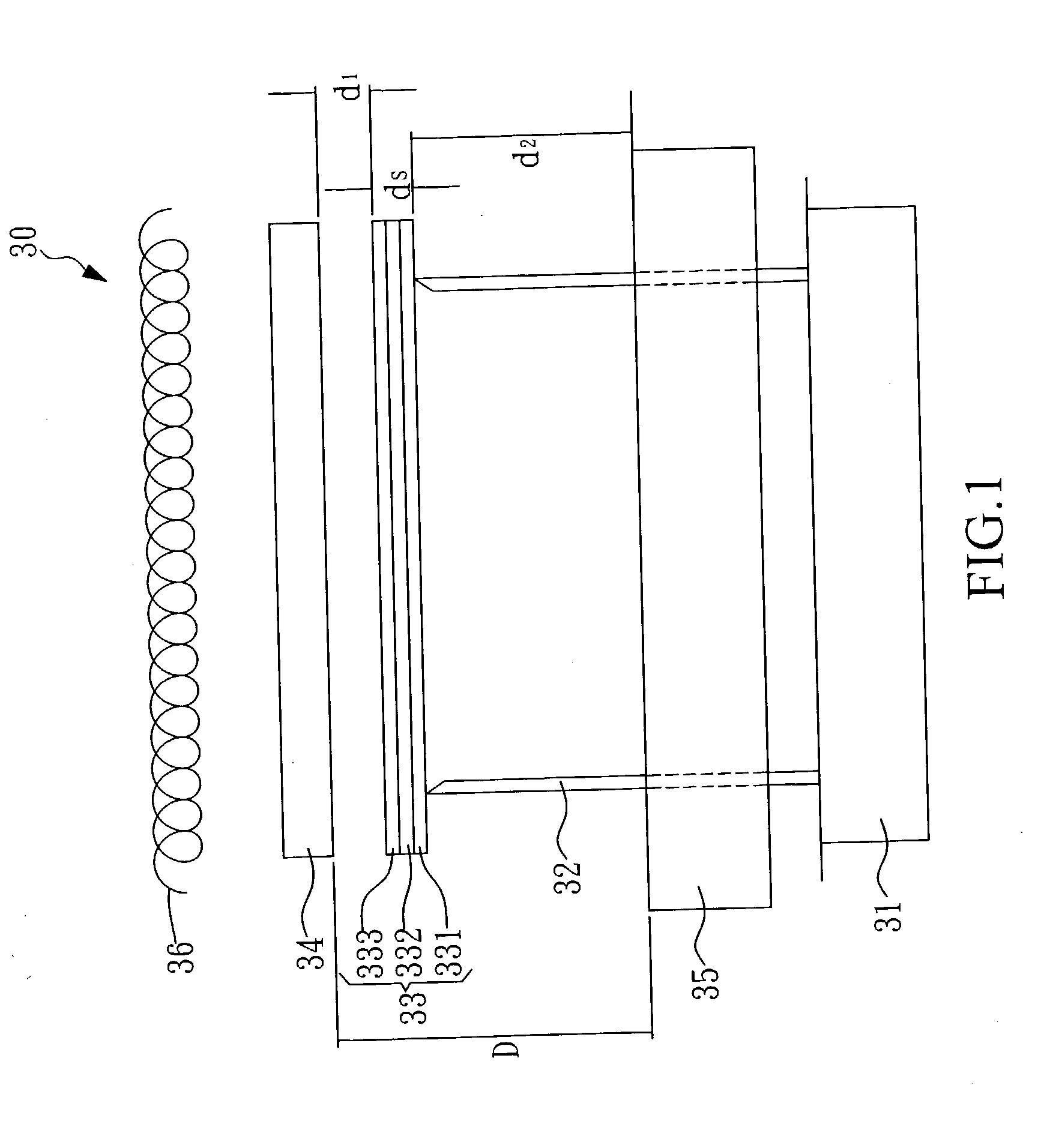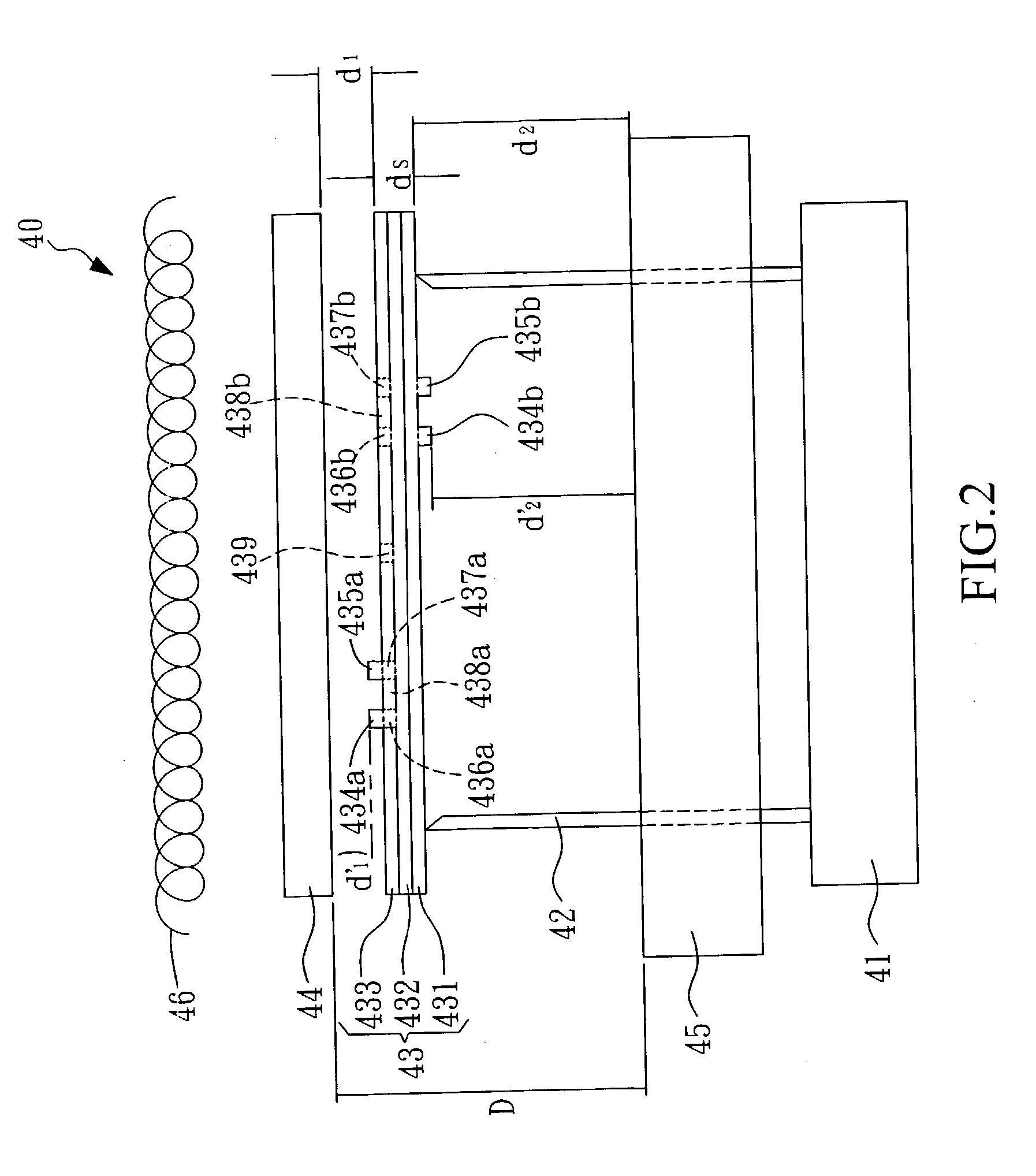Rapid energy transfer annealing device and process
- Summary
- Abstract
- Description
- Claims
- Application Information
AI Technical Summary
Benefits of technology
Problems solved by technology
Method used
Image
Examples
first embodiment
The First Embodiment
[0045] FIG. 1 is a schematic drawing of a first embodiment of the rapid energy transfer annealing device 30 according to this invention. The device 30 comprises a plurality of quartz pillars 32 affixed on a supporting plate 3 1; a sample 33 supported by the plurality of quartz pillars 32 and having a thickness of d.sub.S, the sample 33 including a glass substrate 331, a silicon dioxide layer 332 and an amorphous silicon film layer 333 sequentially deposited above the glass substrate 331; an energy plate 34 provided above the sample 33 at a first distance d.sub.1; a heat sink plate 35 provided below the sample 33 at a second distance d.sub.2 and allowing the plurality of quartz pillars 32 to pass through, such that the supporting plate 31 is capable of vertical movement; and a tungsten halogen lamp 36 provided above the energy plate 34 to supply photon energy required by the energy plate 34. The energy plate 34 is selected from the group consisting of graphite, mo...
second embodiment
The Second Embodiment
[0047] FIG. 2 is a schematic drawing of a second embodiment of the rapid energy transfer annealing device 40 according to this invention. The device 40 comprises a tungsten halogen lamp 46; a sample 43 having a thickness of d.sub.S, the sample including a glass substrate 431, a silicon dioxide layer 432 and a amorphous silicon film layer 433 sequentially deposited above the glass substrate 431; an energy plate 44 provided above the sample 43 at a first distance d.sub.1; and a heat sink plate 45 provided below the sample 43 at a second distance d.sub.2. The overall structure of this embodiment is substantially the same as that of the rapid energy transfer annealing device 30 of the first embodiment. The first distinguishable feature is a first high relief 434a on the amorphous silicon film layer 433. The protrusion of the first high relief 434a subjects its distance d.sub.1' with respect to the energy plate 44 is less than the first distance d.sub.1 between the a...
third embodiment
The Third Embodiment
[0048] FIG. 3 is a schematic drawing of a third embodiment of the rapid energy transfer annealing device 50 according to this invention. The structure and application of the device 50 are substantially the same as those of the rapid energy transfer annealing device 30 of the first embodiment. The device 50 comprises a tungsten halogen lamp 56 and an energy plate 54 that are both stationary. The distinguishable features in FIG. 3 are that a heat sink plate 55, a plurality of quartz pillars 52 affixed on a supporting plate 5 1, a sample 53 supported by the plurality of quartz pillars 52, and a heat sink( plate 55 located below the sample 53 are all placed on a conveyor (not shown) so as to move leftwards simultaneously. Hence, the sample 53 may pass beneath the energy plate 54 along with the conveyor. By the heat scan released by the energy plate 54, the heat released by the energy plate 54 is rapidly absorbed so as to allow rapid temperature elevation. The heat si...
PUM
 Login to View More
Login to View More Abstract
Description
Claims
Application Information
 Login to View More
Login to View More - R&D
- Intellectual Property
- Life Sciences
- Materials
- Tech Scout
- Unparalleled Data Quality
- Higher Quality Content
- 60% Fewer Hallucinations
Browse by: Latest US Patents, China's latest patents, Technical Efficacy Thesaurus, Application Domain, Technology Topic, Popular Technical Reports.
© 2025 PatSnap. All rights reserved.Legal|Privacy policy|Modern Slavery Act Transparency Statement|Sitemap|About US| Contact US: help@patsnap.com



